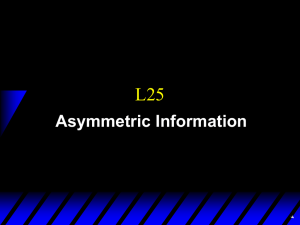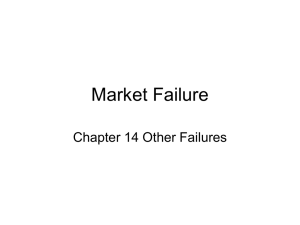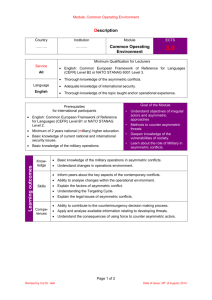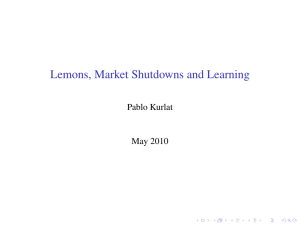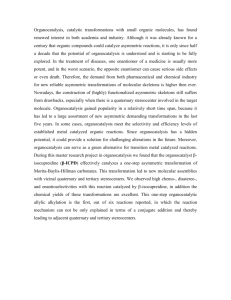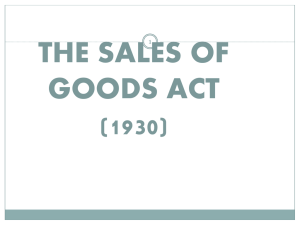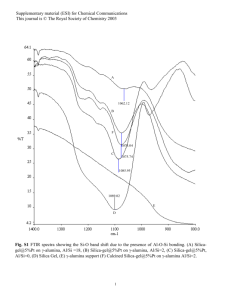L25
advertisement
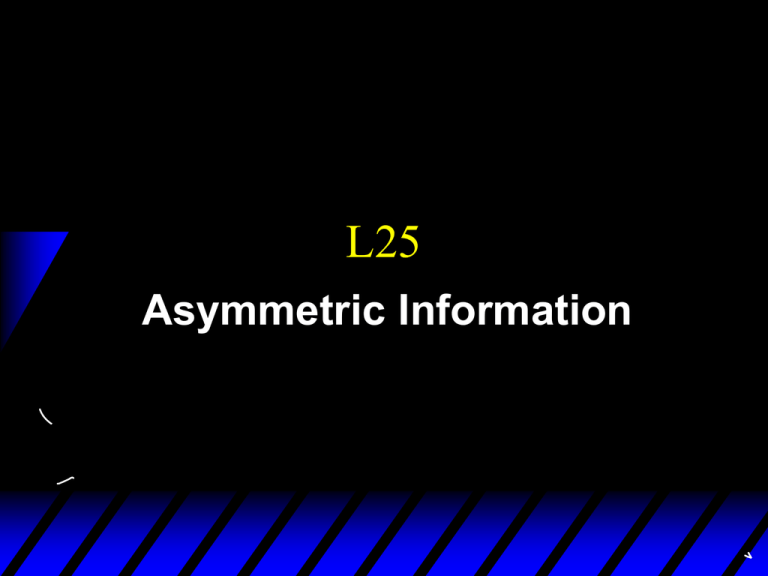
L25 Asymmetric Information Road map 1) Consumers choice 2) Equilibrium, Producers (Pareto efficiency) 3) Market Failures - fixed cost: monopoly and oligopoly - externalities and public goods - asymmetric information Asymmetric Information Assumption: full information about the traded commodities What about following markets? 1. Medical services: a doctor knows more than does the patient. 2. Insurance: buyer knows more about his riskiness than does the seller. 3. Used cars: a car’s owner knows more about it than does a potential buyer Problem: asymmetric information Today Q: how does asymmetric information affect the functioning of a market? Important phenomena adverse selection (hidden information) signaling moral hazard (hidden action) Market for “lemons” Second hand car market. Types of cars: “lemons” and “plums”. Lemon Plum Seller 1000 2000 Buyer 1200 2400 Benchmark: Perfect information Gains-to-Trade (50% - 50%) Asymmetric information Lemon Plum Seller 1000 2000 Buyer 1200 2400 Asymmetric information (50% - 50%) Gains-to-trade and BS, SS Separating equilibrium Lemon Plum Seller 1000 2000 Buyer 1200 2400 Asymmetric information ( , 1 ) Pooling equilibrium Lemon Plum Seller 1000 2000 Buyer 1200 2400 Asymmetric information ( , 1 ) Gains-to-trade BS and SS Adverse Selection Separating equilibrium 1/ 3 “too many” lemons “crowd out” the plums from the market. gains-to-trade are reduced since no plums are traded Bad for plum owners 1/ 3 Pooling equilibrium Lemon owners “hide behind” the plums Somewhat bad for plum owners Pareto efficiency Probability of “bad type” is high: compulsory insurance Signaling Asymmetric information bad for “good” types Incentive: Credible signal of high-quality Examples of signals: warranties, professional credentials, references from previous clients, costly adds, education etc. Signaling (in Labor Market) Two types of managers - high-ability manager has productivity a h 1 (a plum) - low-ability manager has productivity a l 0 (a lemon) Fraction of high-productivity managers 1/ 2 w E (a | I ) Competitive markets Benchmark: No signal (pooling) Equilibrium with signaling Signal: MBA education Managers can chose the level of education Cost of education (MBA) For high-ability worker education costless l l l For low-ability worker c (e ) 0.2e el , e h c (e ) 0 h h Benefit of education MBA has no effect on workers’ productivities Talent not observed but MBA diploma yes - signal It is a deadweight loss Q: Is there a separating equilibrium with signaling? a 1, h Can (Non) Credible signal a 0, l c (e ) 0, h h we separate with e=2? c (e ) 0.2e l l l a 1, (Non) Credible signal h Credibility a 0, l condition c (e ) 0, h h c (e ) 0.2e l l l a 1, h Can A credible signal a 0, l c (e ) 0.1e , h h h we separate now? Signal more costly to low type Deadweight loss (burning money) Common in real world: adds c (e ) 0.2e l l l Moral Hazard (hidden action) With full car insurance are you more likely to leave your car unlocked? With fixed hourly wage is your effort at work reduced? Moral hazard is a reaction to incentives to increase the risk of a loss A consequence of asymmetric information (hidden action). Moral hazard Perfect information: full insurance Asymmetric information: - partial insurance - contract that depends on output To assume proper incentives
